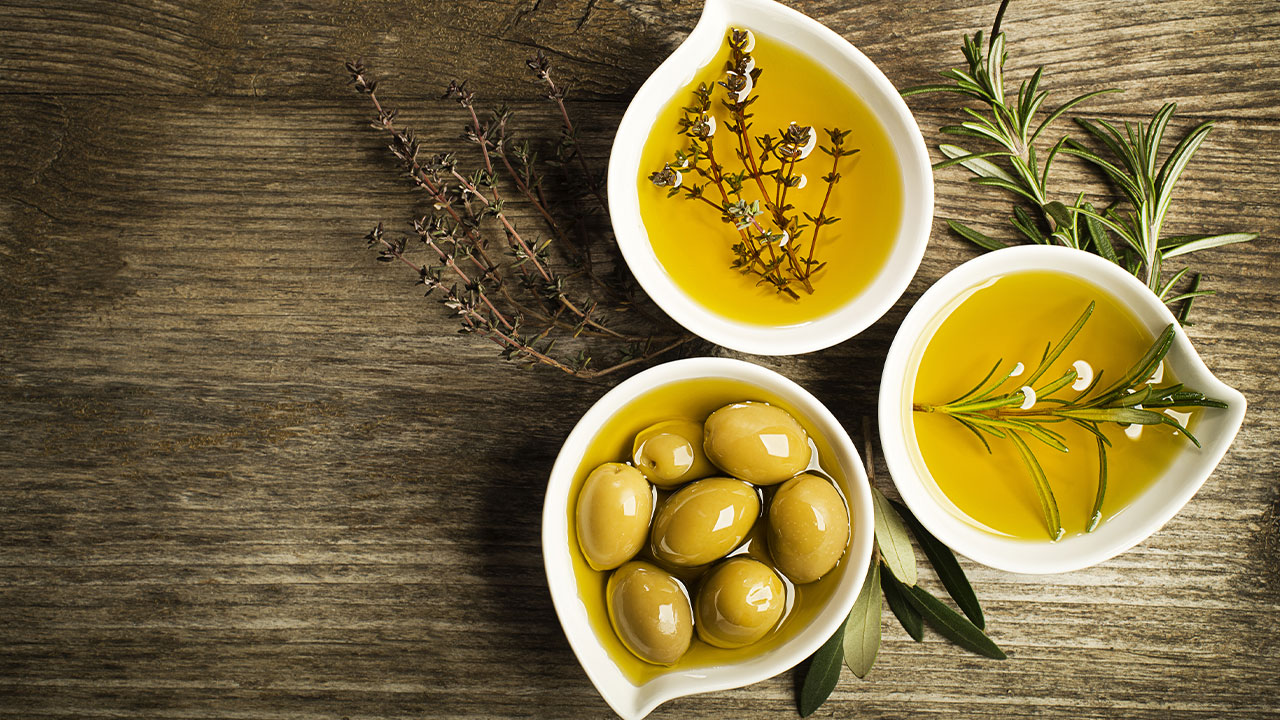The Best Cooking Oil Choices and their Benefits

Hey Angels and Alphas,
Strolling down the oil aisle at the grocery store can sometimes be overwhelming to anyone who has been working to lose weight or is just interested in nutrition. Not just in the sheer amount of different choices you will find, but also in the act of discerning which ones are actually healthy and most useful for the meal you’re making. We know vegetable oils like corn oil are typically considered “refined,” which means they have to go through chemical processing during their production, causing them to be high in omega-6 fatty acids. If they are consumed in higher proportions to omega-3 fatty acids (like they are in the average American diet), omega-6 fats can be inflammatory.
Nutritionists typically encourage their clients to use healthy alternative oils, and use them liberally, when cooking, roasting, or making salad dressing, because of all the healthy plant-based fats inside them.
And not only do they have anti-inflammatory properties, but these fats will also help your body absorb fat-soluble vitamins and minerals. This is absolutely essential for hormone production and proper cognitive function (among other things.)
Let’s talk about the most common healthy oils you’ll find at your local grocery store.
#1 OLIVE OIL
Olive oil is a nutritional powerhouse. It’s a great source of vitamin K and vitamin E, which support bone health and heart health (respectively.) The extra virgin olive oil you’ll find is the least processed form of olive oil, and the most nutritious because of its added antioxidant content. Not to mention, it has the richest flavor.
Olive oil is an amazing source of monounsaturated fats, one of which is oleic acid, which is vital to heart health, lowering LDL and total cholesterol, and reducing inflammation.
Olive oil has a high smoke point of around 175-200°C, and can be used to sauté and fry at medium-high heat, as well as roast veggies, or as a base for salad dressings because of its delicious flavor. Olive oil is also great for baking as a 1:1 replacement for vegetable oil or butter oil — its amazing flavor pairs quite nicely with baked muffins and cakes.
#2 AVOCADO OIL
Avocado oil is another healthy, nutrient-dense alternative to traditional vegetable oil. It is pressed from avocados, and, just like olive oil, is rich in the heart-healthy monounsaturated fat known as oleic acid. Avocado oil is also chock-full of vitamin E, another powerful antioxidant. For the highest amount of health benefits, choose unrefined avocado oil. Avocado oil has a higher smoke point than olive oil and would be better suited for high-heat cooking. It also has a pleasant flavor, and because of it, avocado oil is also an excellent choice for a salad dressing base and can be used in baking as a 1:1 substitution for other oils.
#3 WALNUT OIL
Walnut oil is essentially pressed from walnuts, and has a tasty, nutty flavor. Walnut oil is high in ALA, also known as alpha-linolenic acid, which is converted to omega-3 fatty acids in the body. It has very powerful anti-inflammatory properties.
Walnut oil can generally be used for cooking, but with high heat, its flavor may turn slightly bitter. That’s why walnut oil is best used in salads from leafy greens to chicken salad, as well as in grain bowls and pasta.
#4 COCONUT OIL
Coconut oil has a very different nutritional profile than the other oils here because it consists primarily of saturated fat. Some of the saturated fat you will find in coconut oil is basically a medium-chain fatty acid also known as lauric acid, and it’s thought that lauric acid can be absorbed more quickly by the body and then used for energy, as opposed to being stored as extra fat tissue.
Regardless, countless studies have discovered that coconut oil may contribute to higher LDL cholesterol levels, so it’s not really considered a heart-healthy oil. It should be used only occasionally.
Coconut oil does not contain any significant amounts of other vitamins, minerals, or any health-promoting micronutrients. It has a high smoke point of around 190–204°C. You can use it to add a nice flavor to sautéed vegetables, curry dishes, and as a substitute for butter in a lot of baking recipes.





